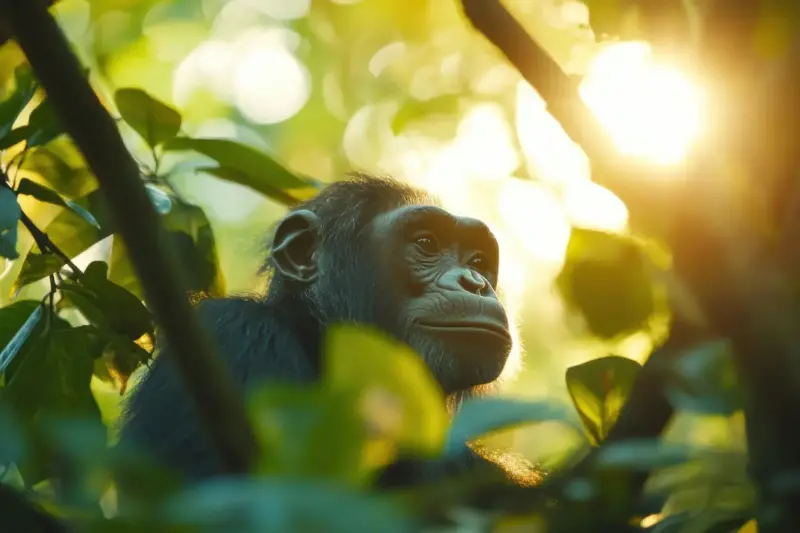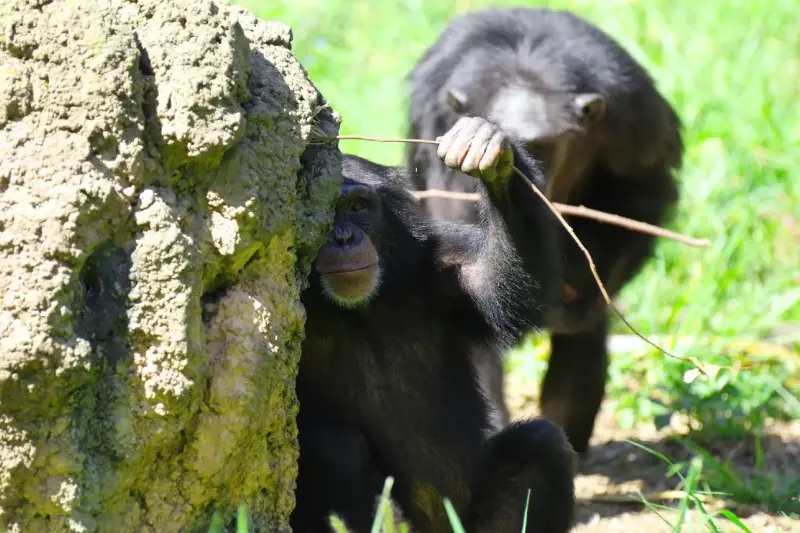From Forest to Pharmacy: Chimpanzees’ Surprising Wisdom

Imagine walking deep into an African forest. The sunlight streaks through the canopy, birds call, and among the shadows, a chimpanzee quietly plucks an unassuming leaf. Instead of eating it, she chews, tastes, and then purposefully spits it out. To an untrained eye, it might look insignificant—a simple monkey’s snack. But a pioneering new study reveals that this behaviour holds astonishing secrets about the natural intelligence and healing instincts of our closest relatives.
A Closer Look at Chimpanzee Apothecaries
Exciting research published just this month has turned the spotlight on how wild chimpanzees rely on native plants as powerful remedies. Scientists working in Uganda’s Budongo Forest Reserve meticulously observed chimpanzee groups for over a decade, cataloguing what they ate—especially when sick or injured.
What stood out? Whenever these animals suffered from mysterious malaise—evidenced by lethargy, diarrhoea, or wounds—they sought out very specific plants, some rarely consumed during health. Often, the leaves or bark chosen were known among local communities to hold medicinal properties, such as anti-inflammatory or anti-microbial effects.
Chimpanzees approached these plants with purpose and timing. Remarkably, after ingesting certain barks or leaves, the chimps typically recovered within days, resuming robust activity and playfulness.
The Plants Behind the Remedy
Curious about what lay behind this natural pharmacy, botanists joined the field teams to analyse the chemical makeup of these plants. Here are a few wonders from the wild medicine cabinet:
- Aspilia leaves: When chewed and swallowed whole, these rough-edged leaves seem to cleanse the digestive tract, helping expel parasitic worms.
- Albizia bark: Rich in active compounds, this bark is anti-inflammatory—helping to treat wounds and internal infections.
- Trichilia roots: Consumed rarely, but often by injured chimps—rich in pain-relieving and antibacterial agents.
- Vernonia amygdalina (bitter leaf): Infamous for its intense bitterness, but consumed by chimps facing fevers. Laboratory research has confirmed this tree’s potent anti-parasitic effects.
Botanist Dr. Miriam Arinaitwe, who helped catalogue the plants, notes, “The overlap between what chimpanzees use and what local healers recommend is not accidental—it’s a meeting of observation, experience, and centuries of evolving knowledge.”

Unwritten Traditions: How Chimpanzees Pass on Knowledge
How do chimpanzees learn these secrets? Field teams observed remarkable, delicate teaching moments between mothers and young chimps. Older individuals would demonstrate selective plucking, slow chewing and sometimes even grimacing as they sampled bitter leaves.
These moments hint at a quiet intelligence—a culture rooted in observation and imitation. The forest, it seems, has its own classroom where wisdom travels through generations without a single written word.
Consider these facts:
- Chimpanzee groups in different forests use unique sets of medicinal plants, showcasing the capacity for regional 'pharmacopeias’ to develop.
- Remedies are still chosen with care—chimps are rarely seen ingesting potentially toxic plants, suggesting refined instincts or learned caution.
- Some behaviours—like leaf swallowing—have been consistently recorded across African forests, hinting at deep evolutionary roots.
What Does This Mean for Us?
The implications of these findings ripple far beyond the trees. Pharmaceutical research teams are now drawing inspiration from these animal selections, seeking potential cures for human diseases. As Dr. Arinaitwe says, “Chimpanzees are nature’s pharmacists—by watching them, we are reminded that medicine isn’t just found in bottles, but also in the patience and wisdom of the wild.”
Nature’s mysteries often lie just beyond the obvious—hidden, yet waiting for us to notice. As scientists dig deeper, one can’t help but marvel: What other secrets might our animal kin hold, waiting to be revealed by a keen eye and an open mind?
